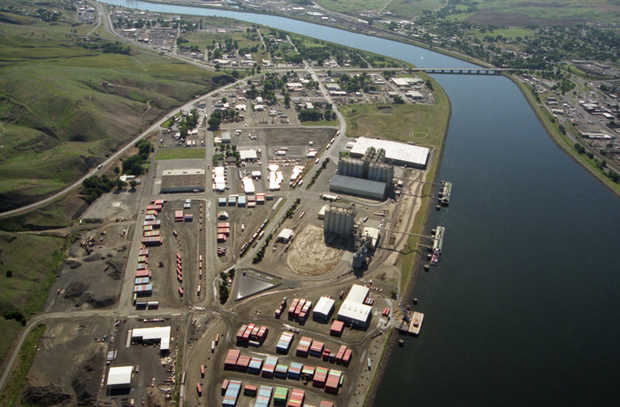forum
library
tutorial
contact

Snake River Dredging Goes Back
to Court as Barge Traffic Drops
by Rocky Barker
Idaho Statesman, November 25, 2014
|
the film forum library tutorial contact |

|
Snake River Dredging Goes Back
by Rocky Barker
|
 The U.S. Army Corps of Engineers issued its final record of decision Nov. 19 on the dredging it says is the only option for meeting its congressionally authorized mission of keeping Lewiston's channel open to barge traffic.
The U.S. Army Corps of Engineers issued its final record of decision Nov. 19 on the dredging it says is the only option for meeting its congressionally authorized mission of keeping Lewiston's channel open to barge traffic.
It plans to begin dredging next month, the first time since 2006 that dredging has been done. But as expected since the latest process began, Idaho Rivers United, the Nez Perce Tribe and anglers filed a lawsuit Monday in federal court in Seattle.
This is not one of those issues that can be worked out collaboratively.
The Corps says it must maintain the lower Snake River navigation channel at 14 feet deep and 250 feet wide, period.
Salmon advocates and libertarians say the $10 million average annual cost to taxpayers is the worst kind of government waste. For the first three quarters of 2014 the Port of Lewiston handled 27 barges, an average of about one barge every 10 days.
The environmental impact study alone cost $16 million and the barging is contracted at $6.5 million. Add to it $1.3 million in federal grant funds for the $2.9 million dock expansion project.
But for the Corps' Northwestern Division commander, Brig. Gen. John S. Kem, none of these numbers matter nor are relevant. Congress he says tells him he must maintain the channel.
The salmon advocates say the entire Snake River project with all four of its dams should go. The economics of the Port is one of their arguments and the dredging process one of their legal pinch points.
"Dredging is not only fiscally irresponsible, it's bad for salmon, Pacific lamprey and other aquatic species," said Kevin Lewis of Idaho Rivers United. "Instead of rushing to begin dredging in December, the Walla Walla District should take a step back and assess the sustainability of the entire lower Snake River Project. The public deserves to know if these projects even pencil out."
Kem also approved a long-term plan for managing sediment accumulation that had not been expected when the dam was built. A team of scientists who examined the sediment issue in 2013 predicted it would get worse.
But the Corps plan includes what it calls a "toolbox" of measures for addressing future problem sediment.
In the long term, the cost of dealing with the sediment can only be avoided if Congress decides to phase out the four dams. Since the entire Idaho congressional delegation along with delegations in Washington and Oregon oppose such action, Kem must go to court and try to get his dredging approved.
The cost just isn't an issue.
learn more on topics covered in the film
see the video
read the script
learn the songs
discussion forum
